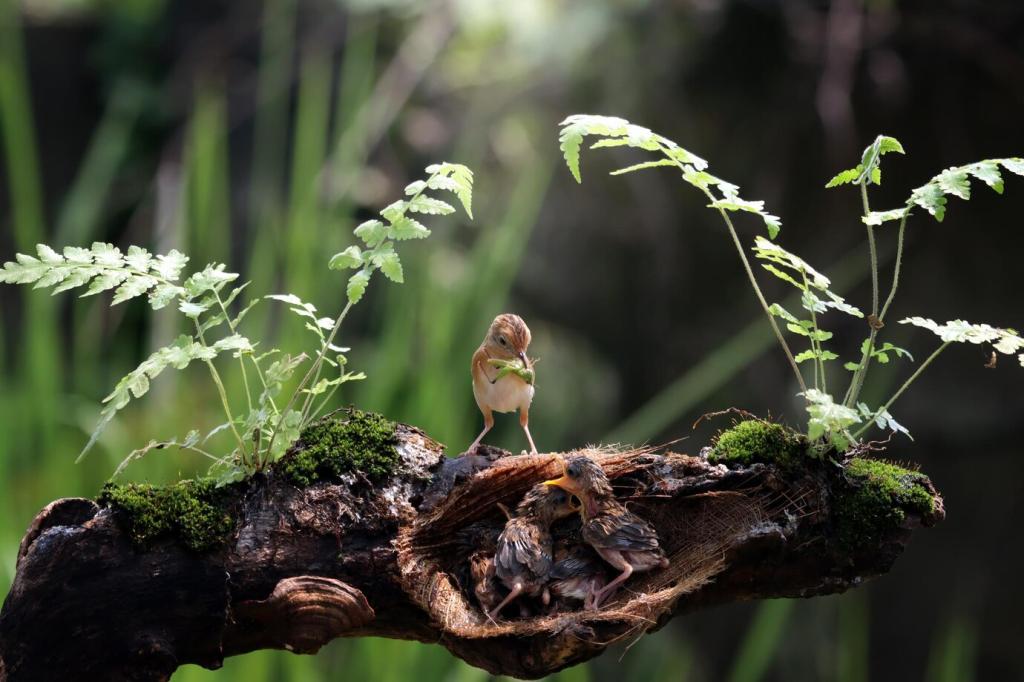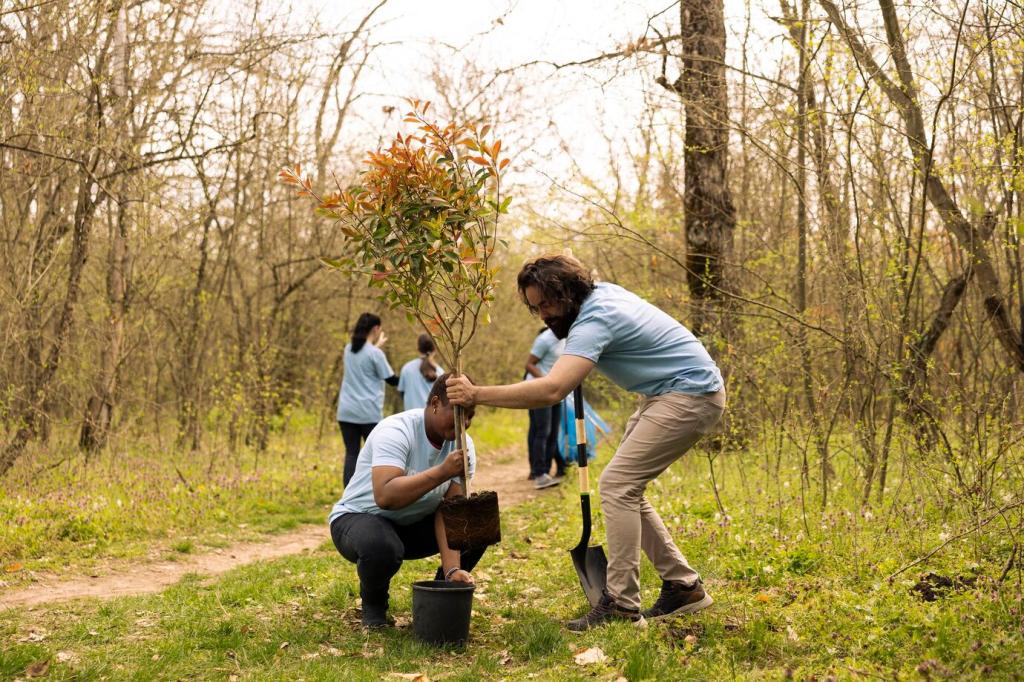The Science That Powers Local Pollinator Garden Movements
Solitary bees nest in soil and stems, bumble bees form small colonies, and hoverflies mimic bees while pollinating countless blooms. Night-flying moths support birds, and beetles pollinate ancient plant lineages. Diverse flowers and undisturbed habitat welcome this full cast, not just the familiar honeybee.
The Science That Powers Local Pollinator Garden Movements
Try timed counts along a short route, repeating weekly at the same hour. Photograph visitors and upload observations to community science platforms. Track bloom density, weather, and species notes. Consistent, humble data tells a powerful story about neighborhood habitat trends and successes.








